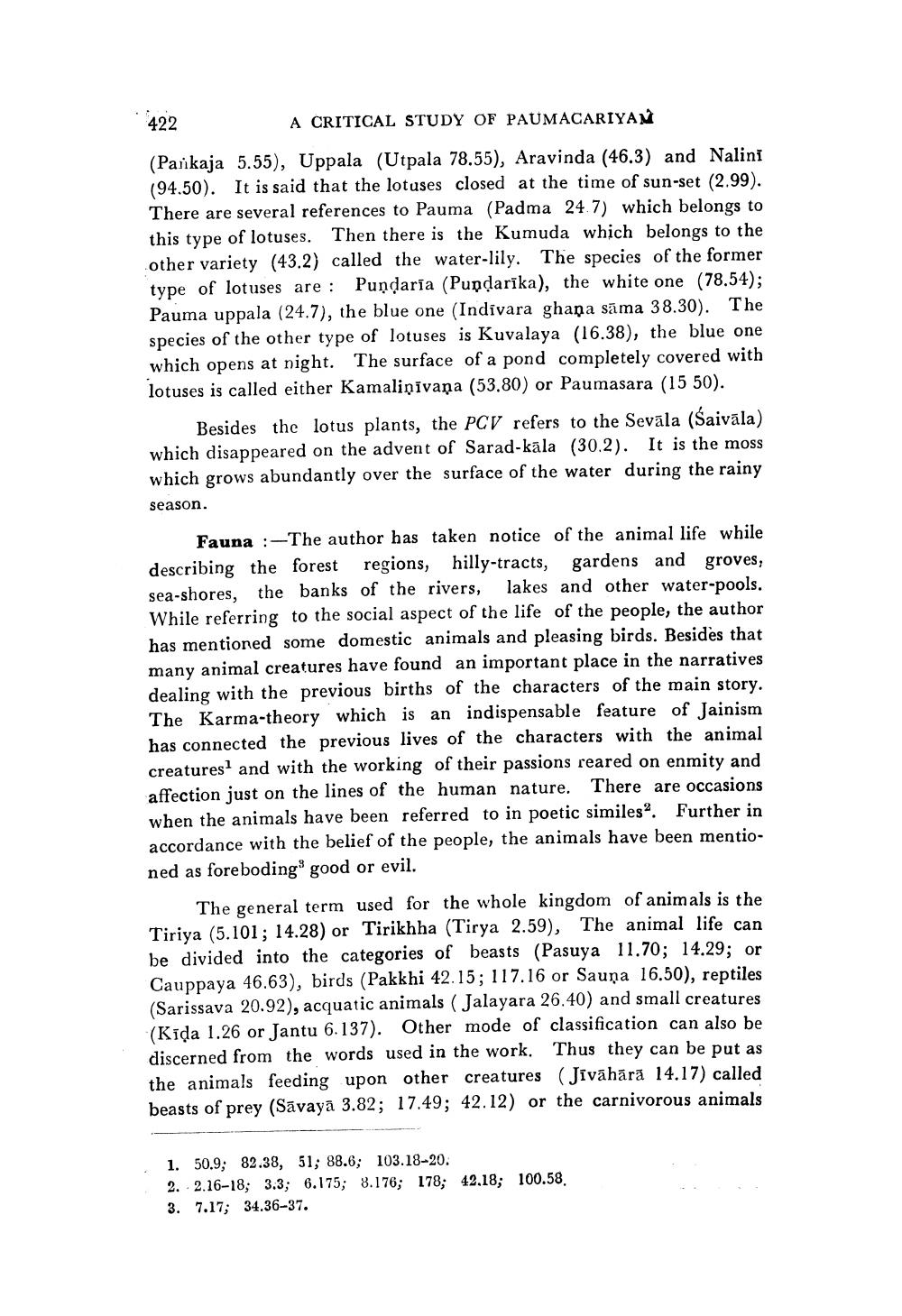________________
422
A CRITICAL STUDY OF PAUMACARIYAN
(Pankaja 5.55), Uppala (Utpala 78.55), Aravinda (46.3) and Nalini (94.50). It is said that the lotuses closed at the time of sun-set (2.99). There are several references to Pauma (Padma 24.7) which belongs to this type of lotuses. Then there is the Kumuda which belongs to the other variety (43.2) called the water-lily. The species of the former type of lotuses are: Pundaria (Pupdarīka), the white one (78,54); Pauma uppala (24.7), the blue one (Indivara ghana säma 38.30). The species of the other type of lotuses is Kuvalaya (16.38), the blue one which opens at night. The surface of a pond completely covered with lotuses is called either Kamalinivaņa (53.80) or Paumasara (15 50).
Besides the lotus plants, the PCV refers to the Sevāla (Saivāla) which disappeared on the advent of Sarad-kāla (30.2). It is the moss which grows abundantly over the surface of the water during the rainy season.
Fauna :-The author has taken notice of the animal life while describing the forest regions, hilly-tracts, gardens and groves, sea-shores, the banks of the rivers, lakes and other water-pools. While referring to the social aspect of the life of the people, the author has mentioned some domestic animals and pleasing birds. Besides that many animal creatures have found an important place in the narratives dealing with the previous births of the characters of the main story. The Karma-theory which is an indispensable feature of Jainism has connected the previous lives of the characters with the animal creatures and with the working of their passions reared on enmity and affection just on the lines of the human nature. There are occasions when the animals have been referred to in poetic similes?. Further in accordance with the belief of the people, the animals have been mentioned as foreboding good or evil.
The general term used for the whole kingdom of animals is the Tiriya (5.101; 14.28) or Tirikhha (Tirya 2.59), The animal life can be divided into the categories of beasts (Pasuya 11.70; 14.29; or Cauppaya 46.63), birds (Pakkhi 42.15; 117.16 or Sauna 16.50), reptiles (Sarissava 20.92), acquatic animals (Jalayara 26.40) and small creatures (Kida 1.26 or Jantu 6.137). Other mode of classification can also be discerned from the words used in the work. Thus they can be put as the animals feeding upon other creatures (Jivāhāra 14.17) called beasts of prey (Sāvayā 3.82; 17.49; 42.12) or the carnivorous animals
1. 50.9; 82.38, 51; 88.6; 103.18-20. 2.2.16-18; 3.3; 6.175; 8.176; 178; 42,18; 100.58. 3. 7.17; 34.36-37.




